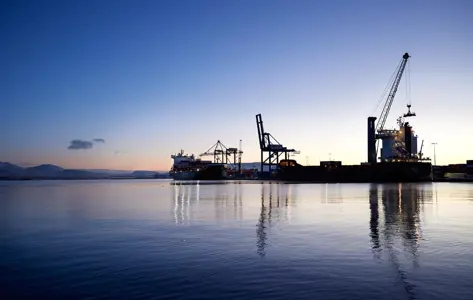

EU Emission Trading System (ETS) Q&A
About ETS
As of January 1st, 2024 EU Emission Trading System (ETS) will be implemented for all vessels over 5,000 gross tonnage. All vessel operators and/or vessel owners will be obligated to purchase and return to authorities, emission allowances relating to their greenhouse gas emissions from shipping. Eimskip will implement an ETS surcharge effective from the same time.
Eimskip has set the ambitious goal of achieving net zero emissions by 2040 and has achieved good results in recent years with increased efficiency and economy of scale in its sailing system. Actions have been taken that directly aim to reduce bunker consumption and carbon emissions, thus reducing the inevitable financial impact that ETS has on the operating cost of the sailing system. As a result, the estimated cost of purchasing emission allowances in 2024 is significantly lower than it would have been if the measures had not been taken.
Eimskip will continue to seek all possible ways to optimize and reduce the environmental impact of the sailing system and thereby reduce the Company’s need for emission allowances.
Frequently Asked Questions - ETS
What is EU ETS regulation?
Committed to fight global warming the European Union (EU) has introduced a system aimed at reaching carbon neutral by 2050. The EU ETS, or Emissions Trading System, is a system were operators in certain industries need to purchase and submit EU Allowances (EUA’s) for each ton of CO2 emissions reported under the scope of the system. As of 1.1.2024, EU ETS will be extended to shipping, as an incentive to reduce the industry’s carbon footprint and accelerate the use of low-carbon fuels.
The system is introduced with a phase-in period:
- In 2024, companies must submit allowances for 40% of their emissions
- In 2025, companies must submit allowances for 70% of their emissions
- As of 2026 emission allowances are needed for all emissions related to the ETS system
EU ETS will apply to all maritime services with at least one call within the EU: 100% of emissions will be considered for legs between 2 EU ports, and 50% of the emissions for legs between EU ports and non-EU ports.
How does it impact Eimskip’s customers?
EU ETS will introduce carbon pricing for shipping starting from 2024. The cost of compliance is considered to be significant and will keep increasing as the system will be implemented. Eimskip will therefore apply an emission surcharge pr. TEU as of January 1st, 2024.
Pre- and oncarriage by vessels connecting to/from Europe by partner carriers of Eimskip will be subject to surcharges of relevant carriers.
How is the ETS surcharge tariff sheet calculated?
The ETS surcharge tariff table is calculated based on the anticipated usage of fossil fuel for Eimskip’s sailing system in 2024. The sailing system has calls between EU ports were 100% of emissions are a part of the system and there are calls between non-EU ports and EU ports at a 50% level. Eimskip surcharge is based on averages and split into the following categories:
- EU to/from Iceland
- US/CA to/from Iceland
- EU to/from Faroes
- Faroes to/from US/CA (via Iceland)
- EU to/from US/CA (via Iceland)
Tariff table for various ETS unit prices
| Tradelane | € 55 | € 60 | € 65 | € 70 | € 75 | € 80 | € 85 | € 90 | € 95 | € 100 | € 105 |
| Iceland to/from Europe | € 14 | € 15 | € 16 | € 17 | € 18 | € 19 | € 20 | € 21 | € 22 | € 23 | € 24 |
| Iceland to/from N-America | € 12 | € 13 | € 14 | € 15 | € 16 | € 17 | € 18 | € 19 | € 20 | € 21 | € 22 |
| Trans-Atlantic Services | € 26 | € 28 | € 30 | € 32 | € 34 | € 36 | € 38 | € 40 | € 42 | € 44 | € 46 |
| Faroe to/from Europe | € 3 | € 3 | € 4 | € 4 | € 5 | € 5 | € 6 | € 6 | € 6 | € 7 | € 7 |
| Faroe to/from N-America | € 15 | € 16 | € 18 | € 19 | € 21 | € 22 | € 24 | € 25 | € 26 | € 28 | € 29 |
| Coastal services Iceland | € 5 | € 5 | € 6 | € 7 | € 8 | € 9 | € 9 | € 10 | € 11 | € 11 | € 12 |
| Temperature control surcharge | 20% | 20% | 20% | 20% | 20% | 20% | 20% | 20% | 20% | 20% | 20% |
Shipments between Faroes and the UK and shipments between the US and CA are not applicable towards ETS and do not carry an ETS surcharge.
How is the issued surcharge decided?
The surcharge will fluctuate as it is depending on the price volatility of the carbon allowances traded into the system. The average purchase cost of EUA’s for a 30-day period, from the 16th to -the 15th, is used as the basis for the following month. Example: If the purchase cost of EUA’s is around € 75 then a tariff for a 20ft (one TEU) from a European port to Iceland will be € 18.
The tariff for January is based on average EU Carbon credit prices from the 16th of November to the 15th of December of € 75.
Is there a public index of EUA prices?
Yes, EUA’s are publicly traded and information about prices can be found here.
What has Eimskip done to mitigate the effect of ETS?
Eimskip has set the goal of becoming net zero by 2040 and has taken various measures to reduce emissions from the operation. The measures include e.g.:
- A more environmentally friendly and reliable sailing system was introduced in November. The new sailing system will reduce CO2 emissions by 14% compared to the system in 2022. See information here: New sailing system
- Investment in harbor cranes and focus on optimizing terminal operation for swift vessel operation
- Electric shore connection for vessels in Reykjavik
- Preparation for design and new building of vessels that can run on environmentally friendly energy sources
- Constant monitoring of vessel operation with the aim of optimizing the utilization of energy sources
Can customers get discount of the ETS surcharge?
ETS surcharge is a non-negotiable surcharge to cover the cost of compliance.
Will the ETS surcharge increase when Eimskip must pay 70% in 2025 and then 100% in 2026 of its emissions?
Yes, the current tariff table is only valid for 2024. A new tariff table will be introduced for 2025 that will be based on the sailing schedule of 2025 and increased purchases of EUA’s. In 2026, Eimskip will have to submit allowances for 100% of emissions under the scope of ETS.
If the price of EUA’s emissions will go down, will the ETS surcharge be lowered?
Eimskip ETS surcharge is based on a 30-day average of the price of EUA’s so if prices drop then ETS surcharge will be adjusted according to the tariff table.